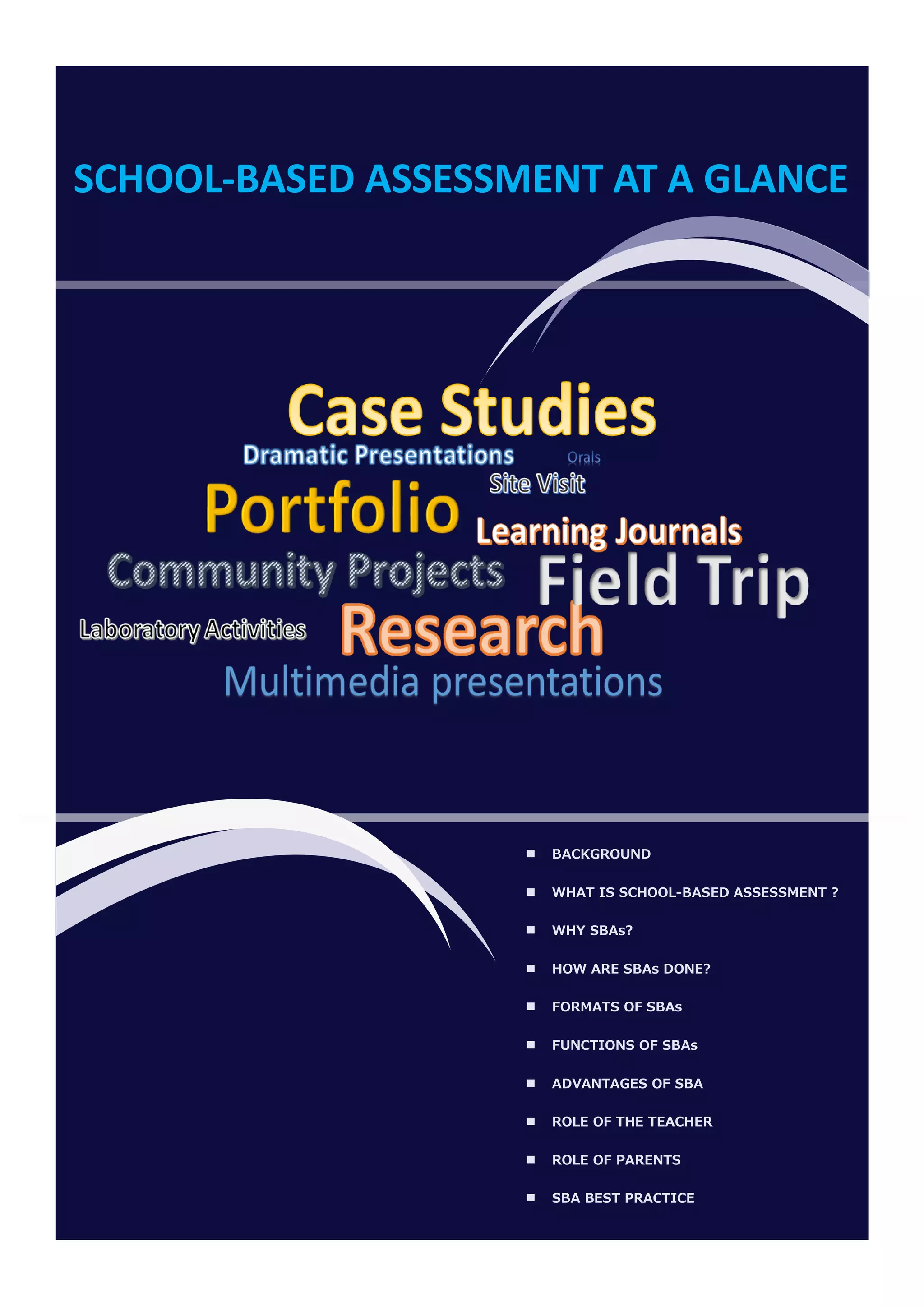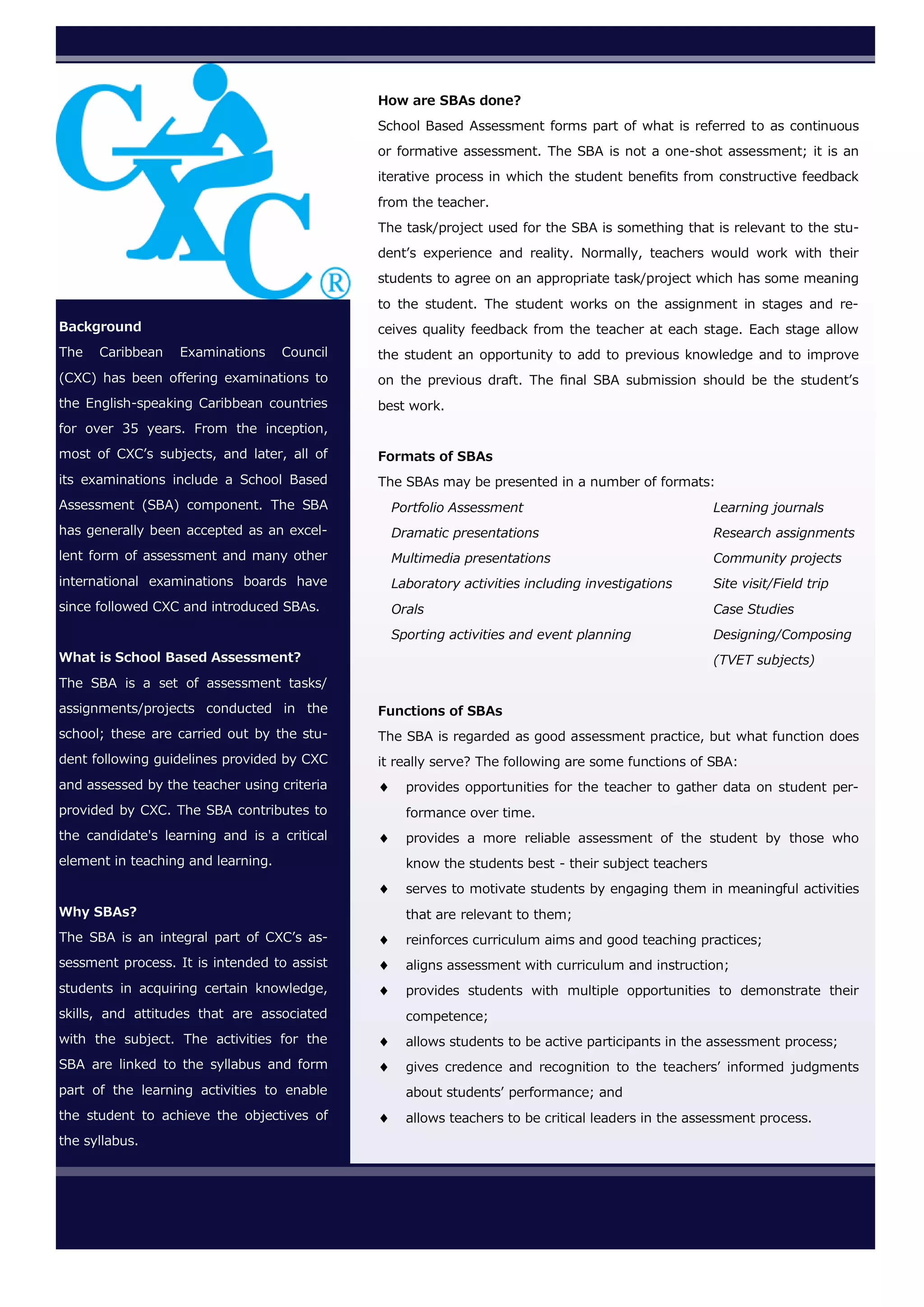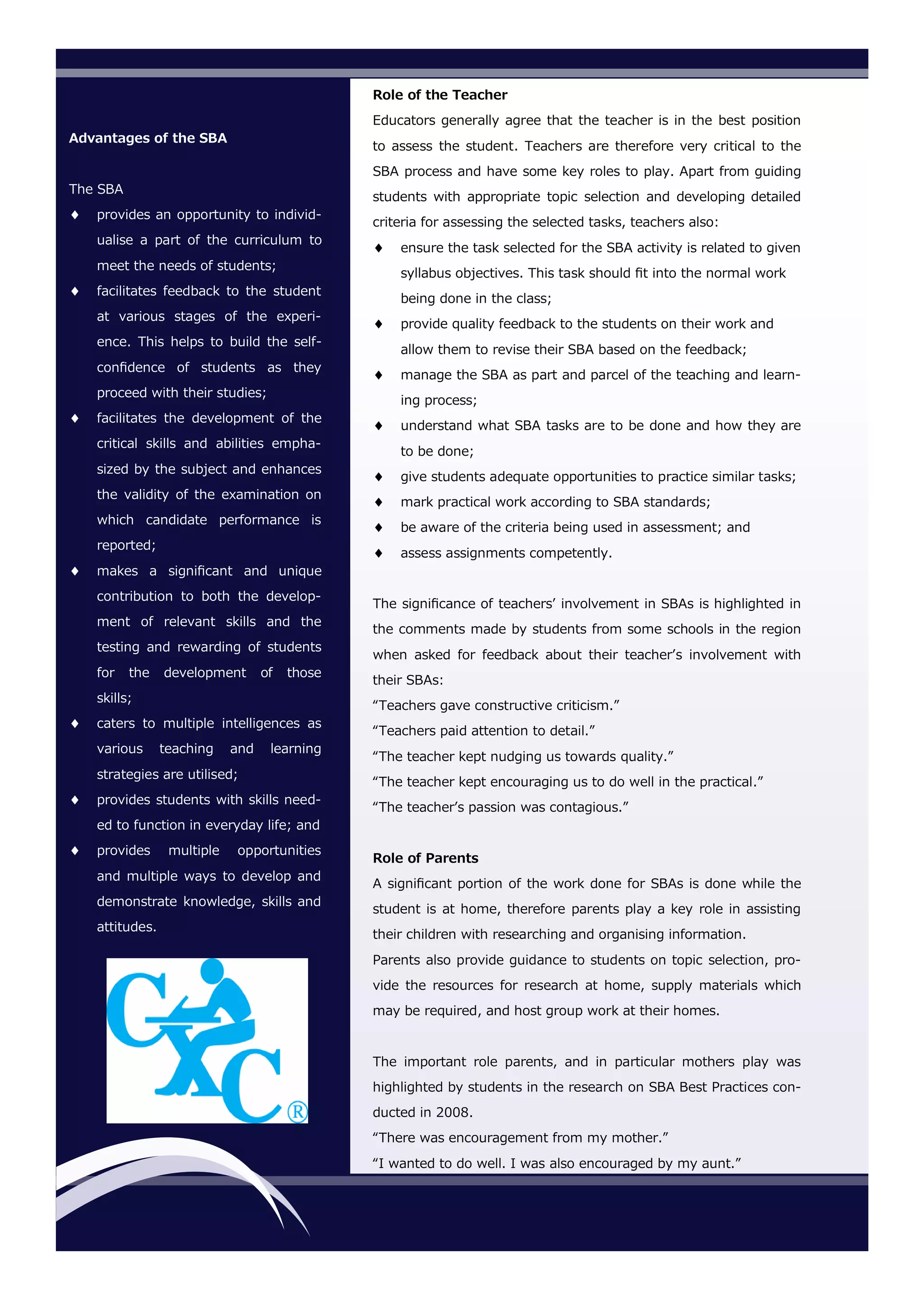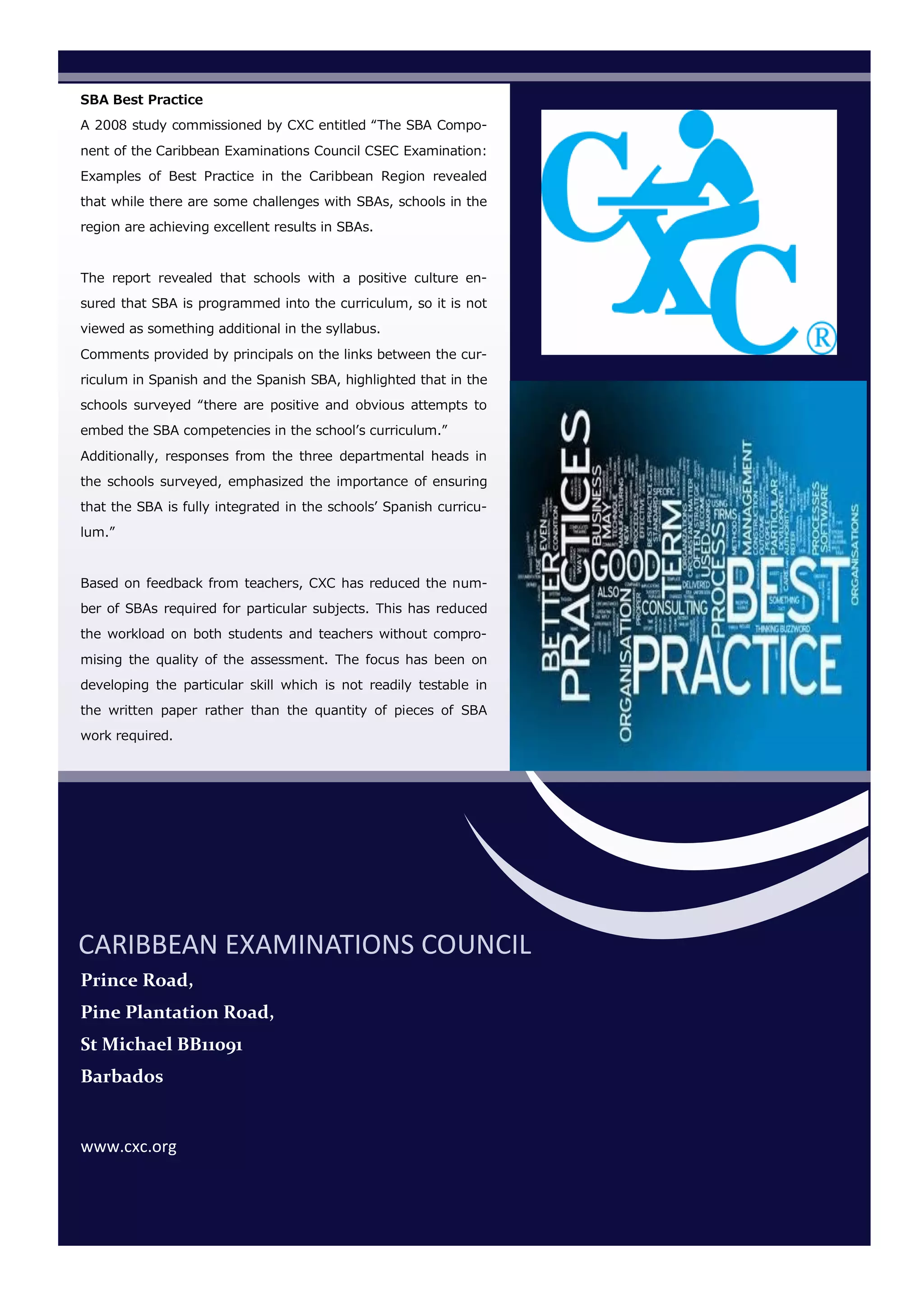School-Based Assessment (SBA) is a critical component of the Caribbean Examinations Council's evaluation process, aimed at enhancing students' knowledge and skills through iterative, teacher-guided projects. The method emphasizes formative assessment, allowing students to refine their work based on feedback, and involves active participation from both teachers and parents. Best practices and positive school cultures have led to successful SBA implementations, ultimately improving student performance while reducing workload through a focus on skill development.



